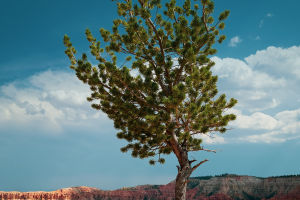Oil painting has been the predominant painting medium in Western art history, giving rise to generations of exceptional artists from the 15th century to the present day. Let's explore some of the world's top renowned oil painters:
1. Jan van Eyck
Considered one of the greatest painters of the early Flemish School, Jan van Eyck is hailed as one of the founders of Northern Renaissance art and a key figure in the development of oil painting.
He is revered as the "Father of Oil Painting" for his profound contributions to the technique. Representative works: "The Ghent Altarpiece," "The Arnolfini Portrait," etc.
2. Leonardo da Vinci
Leonardo da Vinci, renowned as a genius oil painter, is hailed as the epitome of the Renaissance period. His artworks not only reflect reality with astonishing precision but also exhibit profound contemplation and philosophical insights. Masterpieces such as "The Last Supper," and the iconic portrait of "Mona Lisa" are revered as cornerstones of European art.
3. Giorgione
Giorgione, a pioneer of the Venetian School of Italian Renaissance painting, had a profound impact despite his short life and limited output. His poetic style, innovative use of color and landscape, and humanistic themes deeply influenced subsequent painters. Representative works: "The Castelfranco Madonna," "The Tempest," "Three Philosophers," etc.
4. Raphael Sanzio
Raphael, one of the three great masters of the Italian Renaissance alongside Leonardo da Vinci and Michelangelo, represented the pinnacle of artistic achievement in the pursuit of ideal beauty during the Renaissance. His works embody tranquility, harmony, symmetry, and perfection. Representative works: "The Sistine Madonna," "The School of Athens," etc.
5. Titian Vecellio
Titian, hailed as the "Sun Amidst Small Stars" in his time, was one of the most talented painters of the Italian Renaissance, excelling in portraiture, landscapes, and mythological subjects. His mastery of color influenced generations of artists and left an indelible mark on Western art. Representative works: "Venus of Urbino," "Sacred and Profane Love," etc.
6. Velázquez
Velázquez is one of the most important painters in Spanish history and one of the greatest painters of the late Renaissance period. His paintings are known for their realistic portrayal of subjects and mastery of technique. He depicted society without praise or condemnation and considered himself an artist rather than a political or revolutionary figure. Representative work: "Venus at her Mirror."
7. Rembrandt van Rijn
One of the greatest painters in European history, Rembrandt van Rijn is considered one of the greatest Dutch painters. His position in the history of painting is comparable to the giants of the Italian Renaissance. His works cover a wide range of genres, including portraits, landscapes, and historical paintings. Representative works: "The Anatomy Lesson of Dr. Nicolaes Tulp," "The Night Watch," "Three Trees," "The Return of the Prodigal Son," etc.
8. Gustave Courbet
Gustave Courbet is undoubtedly one of the most important figures in realism. His style aimed for realism, with clear forms, restrained colors, and bold brushwork. He was an artist with democratic ideals, emphasizing the social significance of his art and striving to represent the reality of his time. Representative works: "A Burial at Ornans," "The Painter's Studio," "The Stone Breakers," etc.
9. Claude Monet
Claude Monet, a leading figure of Impressionism, is an iconic painter whose influence extends far beyond his time. He is known for his experiments with light and shadow, capturing the fleeting moments of nature with his distinctive brushwork. Representative works: "Impression, Sunrise," "Water Lilies," "Haystacks," etc.
10. Paul Cézanne
Paul Cézanne is one of the most famous painters in the world, whose works and ideas influenced many artists and art movements of the 20th century, especially Cubism. His greatest achievement lies in his profound analysis of color and light, overturning traditional perspectives and introducing a new era of pure art. He is hailed as the "father of modern painting." Representative works: "Mont Sainte-Victoire," "The Card Players," "Still Life Series," etc.


